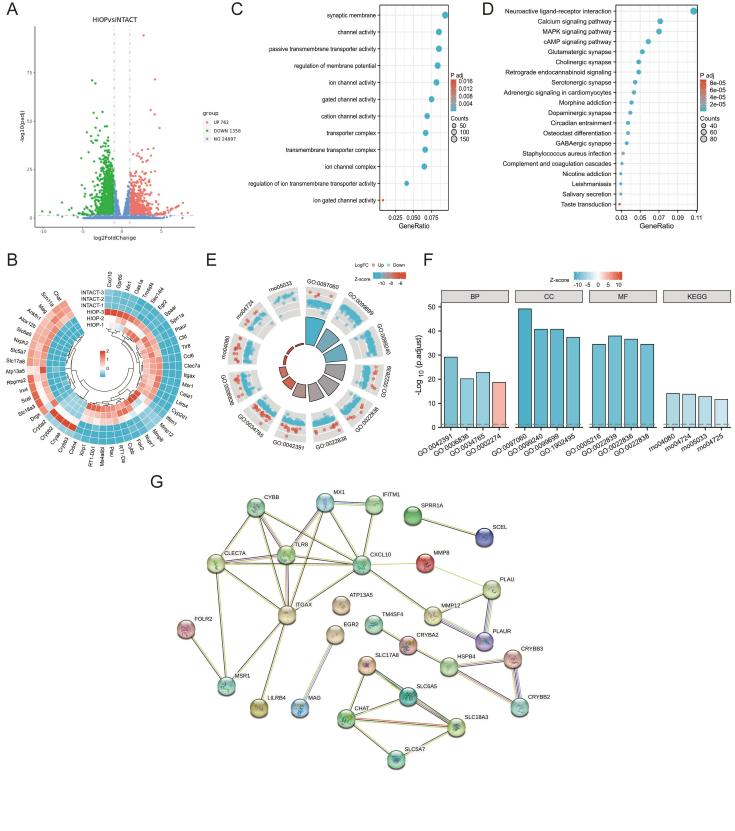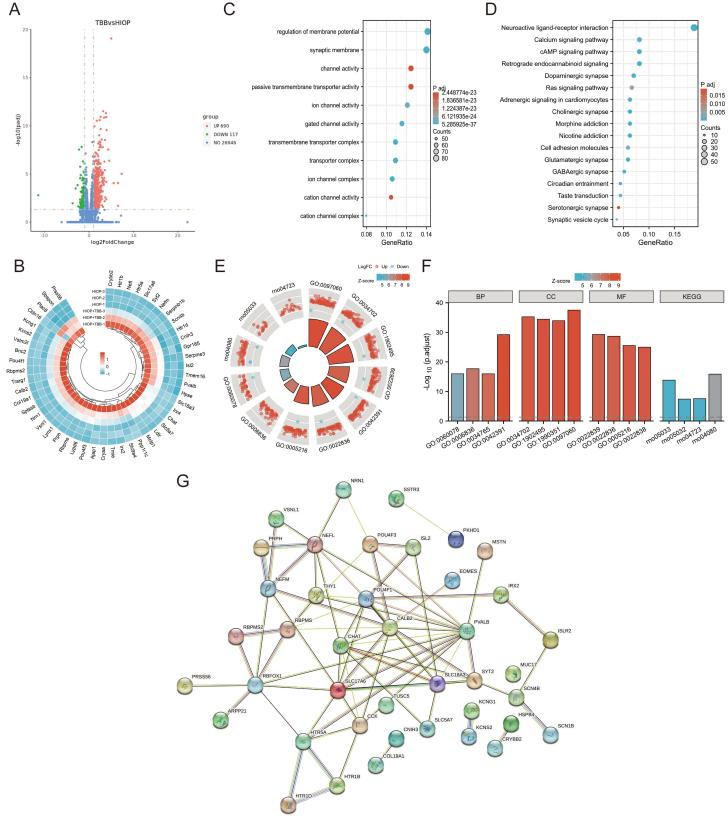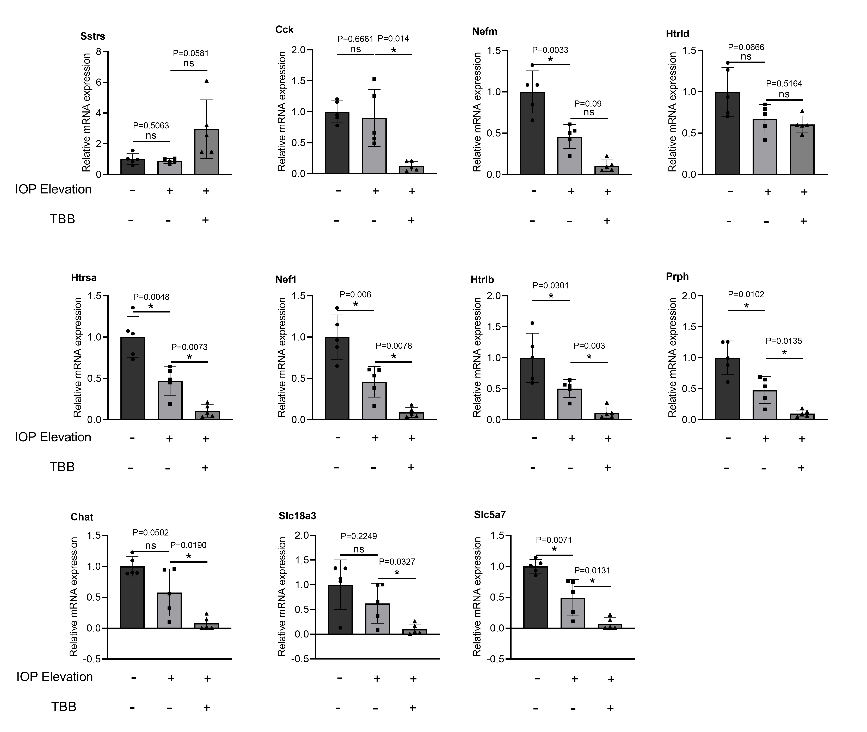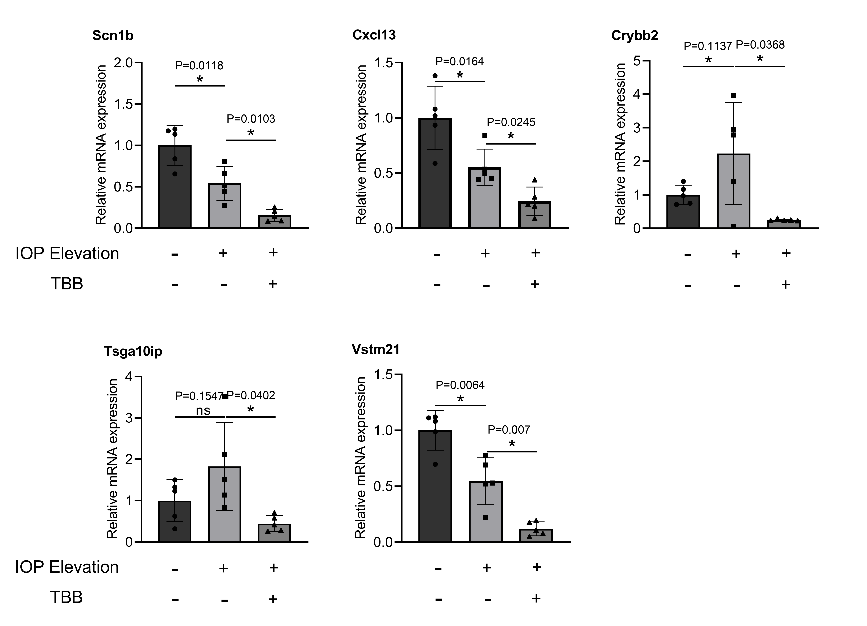中国神经再生研究(英文版) ›› 2024, Vol. 19 ›› Issue (5): 1112-1118.doi: 10.4103/1673-5374.385310
抑制酪蛋白激酶2可促进急性眼压升高后视网膜神经节细胞存活
Casein kinase-2 inhibition promotes retinal ganglion cell survival after acute intraocular pressure elevation
Meng Wang1, 2, Shi-Qi Yao1, 2, Yao Huang3, Jia-Jian Liang1, Yanxuan Xu1, Shaowan Chen1, Yuhang Wang1, Tsz Kin Ng1, 2, 4, #br# Wai Kit Chu4, Qi Cui1, 4, Ling-Ping Cen1, 2, *#br#
- 1Joint Shantou International Eye Center of Shantou University and The Chinese University of Hong Kong, Shantou, Guangdong Province, China; 2Shantou University Medical College, Shantou, Guangdong Province, China; 3Beijing Tongren Eye Center, Beijing Tongren Hospital, Capital Medical University, Beijing, China; 4Department of Ophthalmology and Visual Sciences, The Chinese University of Hong Kong, Hong Kong Special Administrative Region, China
摘要:
眼压升高可引起视网膜神经节细胞死亡,这是青光眼临床可逆危险因素之一,且青光眼是不可逆失明的主要原因。作者团队既往研究已发现,酪蛋白激酶2抑制可促进视神经损伤后大鼠视网膜神经节细胞的存活和轴突再生。为了解这一作用的机制,实验首先将成年大鼠眼压升高至75mmHg并持续2h,然后经玻璃体注射酪蛋白激酶2抑制剂2-二甲基氨基-4,5,6,7-四溴苯并咪唑(TBB)和2-二甲基氨基-4,5,6,7-四溴苯并咪唑(DMAT)进行治疗。结果可见,TBB和DMAT抑制酪蛋白激酶2显著促进了视网膜神经节细胞活性,同时减少了浸润巨噬细胞的数量。进一步转录组学分析显示,MAPK信号通路参与眼压升高,但与酪蛋白激酶2抑制无关。此外,酪蛋白激酶2抑制可下调参与眼压升高的基因(Cck, Htrsa, Nef1, Htrlb, Prph, Chat, Slc18a3, Slc5a7, Scn1b, Crybb2, Tsga10ip以及Vstm21)的表达。由此表明,抑制酪蛋白激酶2可通过抑制巨噬细胞激活来提高眼压升高后大鼠视网膜神经节细胞活性。
https://orcid.org/0000-0003-3876-0606 (Ling-Ping Cen)







